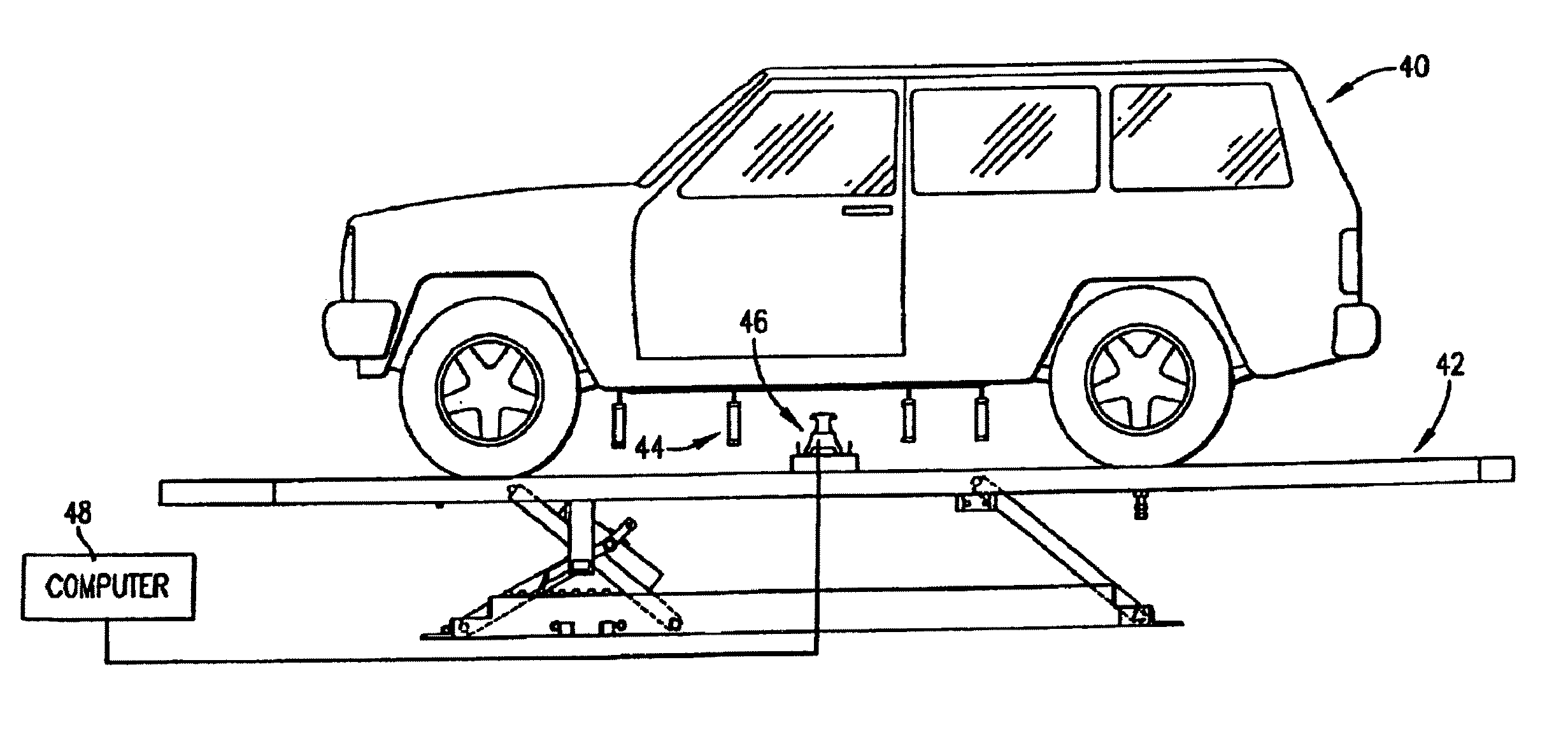Laser scanning apparatus with improved optical features
a scanning apparatus and optical feature technology, applied in the direction of mechanical measuring arrangements, measuring devices, instruments, etc., can solve the problems of not providing information by itself as to the extent of straightening to be accomplished, the casting is not thermally stable, and the apparatus suffers from a number of problems and limitations, so as to reduce the number of major adjustments, facilitate and improve the accuracy of alignment mechanisms
- Summary
- Abstract
- Description
- Claims
- Application Information
AI Technical Summary
Benefits of technology
Problems solved by technology
Method used
Image
Examples
Embodiment Construction
, below.
BRIEF DESCRIPTION OF THE DRAWINGS
[0018]FIG. 1 is a side elevational view of a vehicle having coded reflective targets suspended from predetermined locations on the vehicle, and with a laser scanning apparatus disposed below the vehicle and in an orientation for scanning the depending targets;
[0019]FIG. 2 is a front elevational view of a laser scanning apparatus;
[0020]FIG. 3 is a sectional view taken along line 3-3 of FIG. 2 and depicting further details of the internal construction of the laser scanning apparatus;
[0021]FIG. 4 is a vertical sectional view of the laser scanning apparatus;
[0022]FIG. 5 is a bottom view of the laser scanning apparatus, with the bottom cover plate removed;
[0023]FIG. 6 is a vertical sectional view taken along line 6-6 of FIG. 2 and depicting components of the laser assembly of the laser scanning apparatus;
[0024]FIG. 7 is a vertical sectional view taken along line 7-7 of FIG. 2 and illustrating in detail the construction of the mirror assemblies of ...
PUM
 Login to View More
Login to View More Abstract
Description
Claims
Application Information
 Login to View More
Login to View More - R&D
- Intellectual Property
- Life Sciences
- Materials
- Tech Scout
- Unparalleled Data Quality
- Higher Quality Content
- 60% Fewer Hallucinations
Browse by: Latest US Patents, China's latest patents, Technical Efficacy Thesaurus, Application Domain, Technology Topic, Popular Technical Reports.
© 2025 PatSnap. All rights reserved.Legal|Privacy policy|Modern Slavery Act Transparency Statement|Sitemap|About US| Contact US: help@patsnap.com



